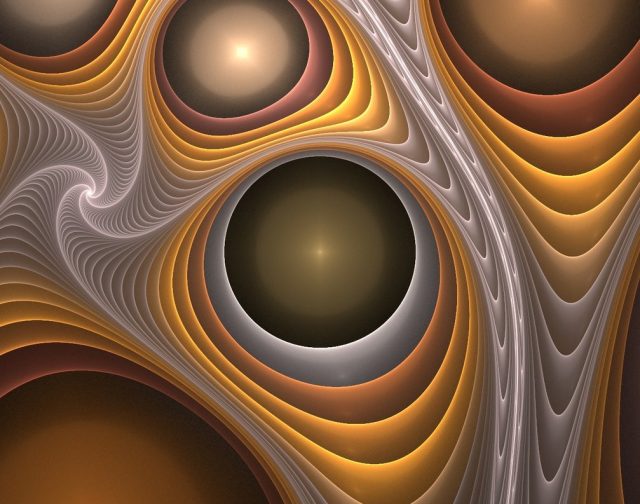Glass transition in nano-structured polymers

Common glass, used in windows or bottles, for example, is made by heating a mixture of calcium oxide (lime), sodium carbonate (soda), and silicon (IV) oxide (sand), resulting in a calcium silicate. This silicate is not a crystal but a solid in which atoms are random and have no long-range orderd pattern. These kind of solids, called “glasses”, characteristically have no definite melting point, softening over a range of temperatures instead. Thus the so-called glass transition temperature is not a clear-cut temperature (Tg) and the theory of the glass transition is much more complicated than the theory of normal phase transitions..
When dealing with polymers, we usually find a glass structure and behaviour; but if the polymeric units are big enough, their size fall in the nanometre range or, in other words, we have a glass that presents structure at the nano scale. This means that, even though it is still a glass, there is some kind of order at a considerable range. Actually, the alteration of glassy dynamics in nanostructured glasses has been one of the most intensely debated issues since the finding in the early 90s of depressed glass transition temperature in thin polymer films.
And it is so hotly debated, apart from its scientific interest, for its economic and technical importance. These nanostructured systems can be employed in a wide range of technologically relevant applications. For instance, submicron thick polymer films are used as templates in microelectronics, non-biofouling protective coatings, membranes in separation technologies, or active layers in photovoltaic cells. Polymer nanocomposites are extensively employed in tire technologies and in those applications where mechanical reinforcement, enhancement of barrier properties, flame resistance, electro-optical, and bactericidal properties, are required. Polymer nanospheres have received increasing interest in the last years in applications such as vehicles in drug delivery, components in fluorescent imaging, performance reinforcing additives, and components in photonic structures, to name just a few.
So, after that much discussion some clarification in some key points of the behaviour of nanostructure glasses is badly needed. Daniele Cangialosi, Angel Alegría, and Juan Colmenero, from CFM (CSIC-UPV/EHU), UPV-EHU and DIPC, provide1 just that. They focus on the efficiency of maintaining equilibrium when nano-structured polymers are cooled down from the melt (providing the Tg) or recovering it once in the glassy state. They critically review those studies published in the last decade where the effect of nano-structure on the Tg and the recovery of equilibrium in the out-of-equilibrium glass is investigated in thin films, nanocomposites and nanospheres.
The free volume hole diffusion (FVHD) model has been extensively applied in recent times to describe Tg depression and acceleration of equilibrium recovery in nanostructured glasses exhibiting pronounced bulk-like linear dynamics. The review shows that this model is able to provide a suitable description of experimental data and is consistent with the faster out-of-equilibrium dynamics in nanostructured glasses exhibiting a large free interface.
The researchers show how the out-of-equilibrium dynamics cannot be exclusively related to the equilibrium dynamics, that is, the rate of spontaneous fluctuations measured by techniques working in the linear regime. In other words, glassy dynamics in nanostructured glasses exhibit a behaviour markedly different from that of bulk glass formers.
The fact that equilibrium recovery of nano-structured glasses is achieved via two mechanisms, one relevant for the bulk and the other for nanostructured glasses, points to a complex nature of the kinetics of glasses equilibration. Unfortunately, in bulk glass formers, the time scale involved to monitor all recovery stages are often very long (larger than one year in some cases).
Finally, the researchers conclude that exploring nanostructured glasses with enhanced out-of-equilibrium dynamics would be able to provide new insights on the topic with time scales amenable to the normal practice of the experimental work.
Author: César Tomé López is a science writer and the editor of Mapping Ignorance
References
- Daniele Cangialosi, Angel Alegría, and Juan Colmenero (2016) Effect of nanostructure on the thermal glass transition and physical aging in polymer materials Progress in Polymer Science doi: 10.1016/j.progpolymsci.2015.10.005 ↩